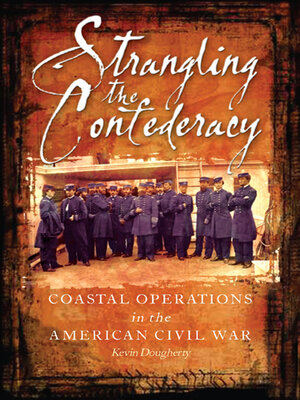
Sign up to save your library
With an OverDrive account, you can save your favorite libraries for at-a-glance information about availability. Find out more about OverDrive accounts.
Find this title in Libby, the library reading app by OverDrive.



Search for a digital library with this title
Title found at these libraries:
| Library Name | Distance |
|---|---|
| Loading... |
A historian and Citadel tactical officer examines the Civil War's naval conflicts to shed new light on the Union's vital yet overlooked Anaconda campaign.
A selection of the Military Book Club.
While the Civil War is mainly remembered for epic land battles, the Union waged an equally important campaign at sea—dubbed "Anaconda"—to gradually deprive the South of industry, commerce, and resources. The Rebels responded with fast ships called blockade runners that tried to evade the Yankee fleets, while at the same time constructing fortifications that could protect the ports themselves. Ultimately, it was this coastal conflict that brought the Confederacy to its knees.
In Strangling the Confederacy, historian and Citadel tactical officer Kevin Dougherty examines the Union's naval actions from Virginia down the Atlantic Coast and through the Gulf of Mexico. The Union's Navy Board leveraged superior technology, including steam power and rifled artillery, in ways that rendered the Confederate coastal defenses nearly obsolete. But when the Union encountered Confederate resistance at close quarters, the tables were turned—as in the failures at Fort Fisher, the debacle at Battery Wagner, the Battle of Olustee, and in other clashes.
Offering a unique perspective, Dougherty concludes that, without knowing it, the Navy Board did an excellent job at following modern military doctrine. While the multitude of small battles that flared along the Rebel coast have been overshadowed by the more titanic inland battles, in a cumulative sense, Anaconda—the most prolonged of the Union campaigns—spelled doom for the Confederacy.
A selection of the Military Book Club.
While the Civil War is mainly remembered for epic land battles, the Union waged an equally important campaign at sea—dubbed "Anaconda"—to gradually deprive the South of industry, commerce, and resources. The Rebels responded with fast ships called blockade runners that tried to evade the Yankee fleets, while at the same time constructing fortifications that could protect the ports themselves. Ultimately, it was this coastal conflict that brought the Confederacy to its knees.
In Strangling the Confederacy, historian and Citadel tactical officer Kevin Dougherty examines the Union's naval actions from Virginia down the Atlantic Coast and through the Gulf of Mexico. The Union's Navy Board leveraged superior technology, including steam power and rifled artillery, in ways that rendered the Confederate coastal defenses nearly obsolete. But when the Union encountered Confederate resistance at close quarters, the tables were turned—as in the failures at Fort Fisher, the debacle at Battery Wagner, the Battle of Olustee, and in other clashes.
Offering a unique perspective, Dougherty concludes that, without knowing it, the Navy Board did an excellent job at following modern military doctrine. While the multitude of small battles that flared along the Rebel coast have been overshadowed by the more titanic inland battles, in a cumulative sense, Anaconda—the most prolonged of the Union campaigns—spelled doom for the Confederacy.







